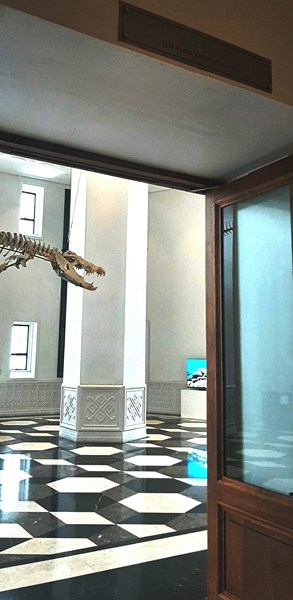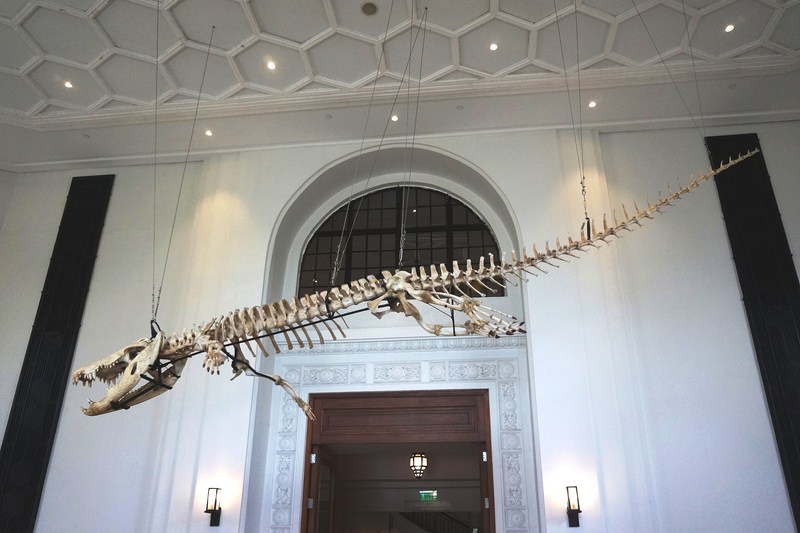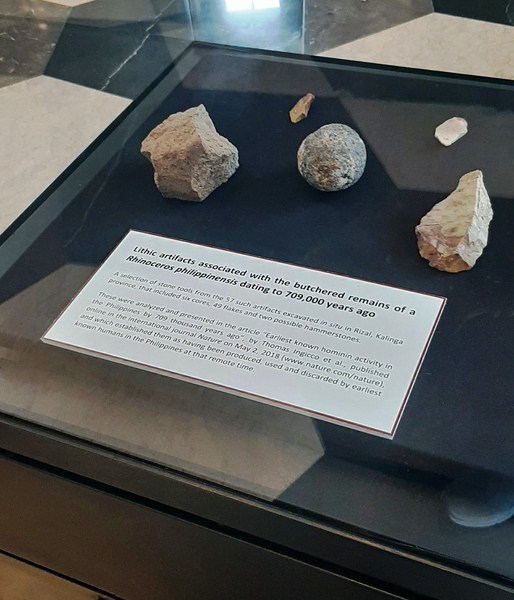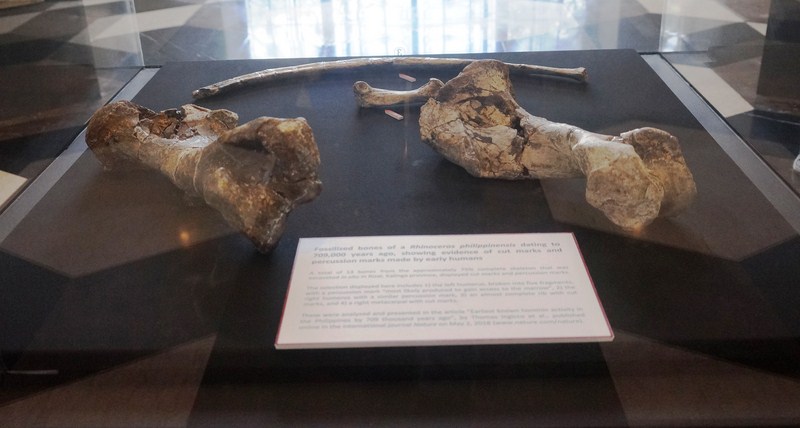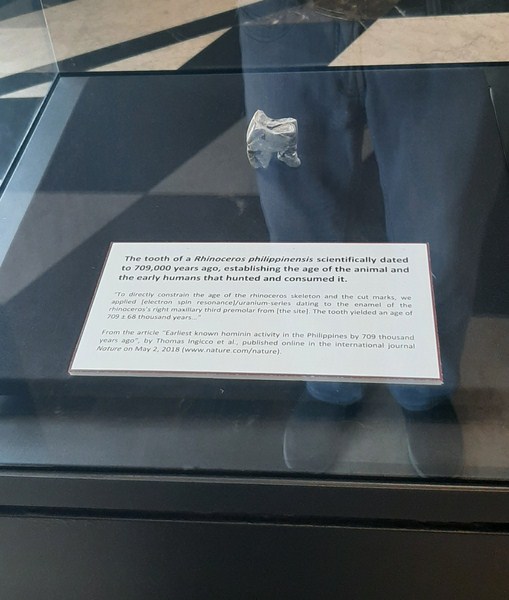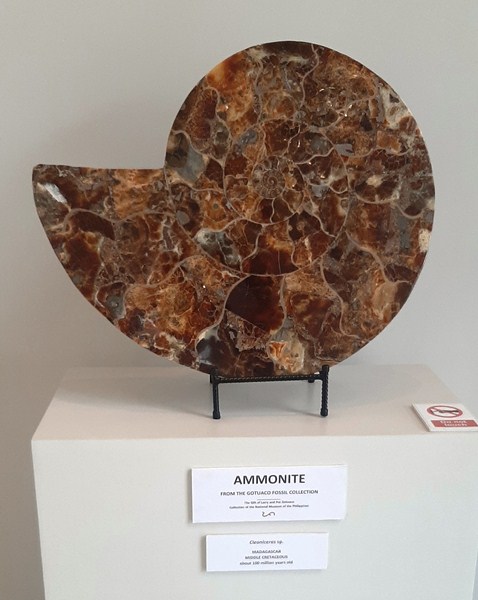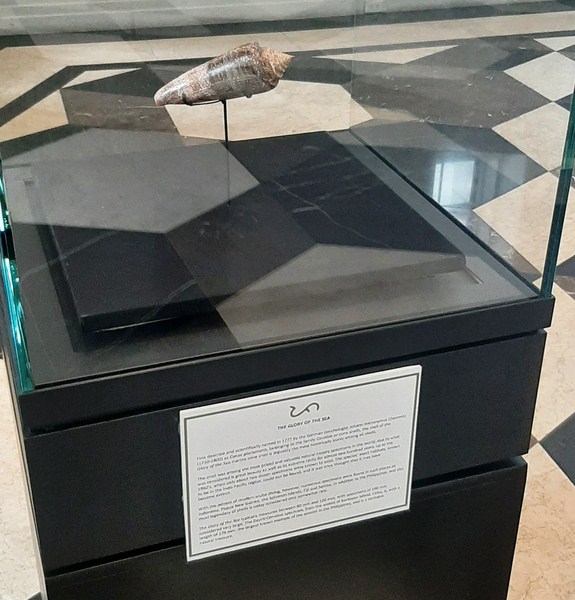The Ayala Reception Hall, an example of adaptive reuse in the National Museum of Natural History, used to be cut in the middle by a floor. It now holds four important exhibits which were launched last May 2019.
Check out “National Museum of Natural History“
Upon entry, up in the ceiling is the hanging skeleton of “Lolong,” the former Guinness World Records holder as the largest saltwater crocodile in captivity from September 3, 2011 until his death on February 10, 2013. His taxidermied body, on the other hand, is displayed at Gallery I (Philippine Biodiversity) at the fifth floor.
Check out “The Sad Tale of Lolong” and “Gallery I (Philippine Biodiversity)“
Below it is the exhibit of the tooth and four of the 13 bones of the extinct Philippine rhinoceros (Nesorhinus philippinensis) with cut and butcher marks. These fossilized Pleistocene Age remains, unearthed in 2014 at the Awidon Mesa Formation in Rizal, Kalinga together with stegodon (Stegodon luzonensis), pig (Celebrochoerus cagayanensis), freshwater turtle, monitor lizard and Philippine brown deer and 57 stone tools (6 cores, 49 flakes and 2 possible hammerstones), is a breakthrough in the field of paleoanthropology.
It proved early human activity around 709,000 years ago, 10 times earlier than previously believed. Researchers believe that early humans used the stone tools to get the marrow at the bones of the ribs, metacarpals and both humeri of the rhinoceros .
Also in the Ayala Hall is the “Ammonite Mollusk” (Cleonicerus sp.), an index fossil, from the Gotuaco Fossil Collection, which is used as a basis in establishing geological periods. Dating from the Middle Cretaceous Period (about 100 million years old), it was found in Madagascar.
The Conus gloriamaris, also known as the “Glory of the Sea Cone,” a type of marine gastropod mollusk that in the family Conidae was once believed to be one of the rarest types of shell in the world. Measuring 179 mm. long, it is probably the largest sea cone shell (of its kind) not just in the country, but in the world.
Ayala Reception Hall: 2/F, National Museum of Natural History, Agrifina Circle, Rizal Park, T.M. Kalaw cor. Gen. Luna Sts., Manila. Open Tuesdays – Sundays, 9 AM to 12 noon (cut off time is 11 AM) and 1 to 4 PM (cut off time is 3 PM). Tel: 82981100 local 3000 and 85277889. E-mail: cmvod@nationalmuseum.ph or inquiry@nationalmuseumph.gov.ph. Visitors shall be limited to 100 per museum per session. Visitors are required to pre-book online at https://reservation.nationalmuseum.gov at least a day before the visit. Confirmation of booking will be sent through email. Group reservations are limited to five (5) persons only. Walk-in visitors will NOT be accommodated. Coordinates: 14°34′59.9″N 120°58′55.9″E.

